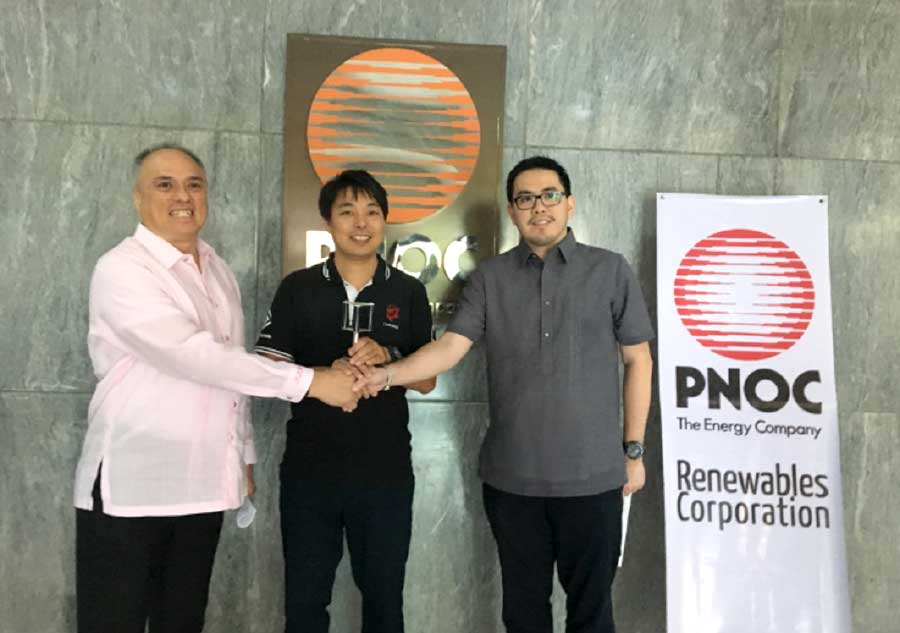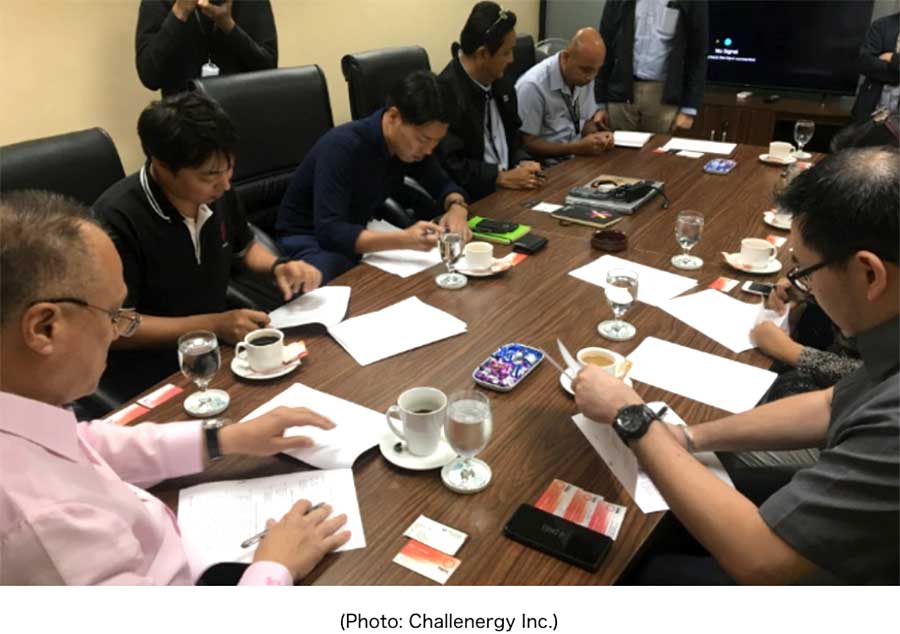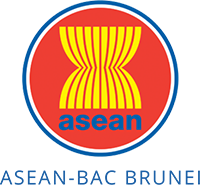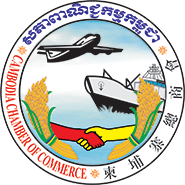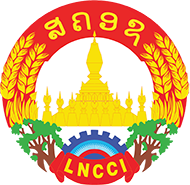News
May 10th 2021
Introduction of ADX Project 7: Challenergy (Environment & Energy)
ASEAN-Japan collaborations on challenging DX projects
It was announced last October that 23 demonstration projects were selected as a first round of the Financial Support Program, which was designed to strengthen Asia Digital Transformation (ADX). AMEICC Secretariat is interviewing several Japanese companies selected for this program and Challenergy Inc., a wind-energy startup established in 2014, is the seventh interviewee. The company aims to establish an accessible and environmentally sustainable distributed energy system (“microgrid”) for remote islands in the Philippines.
Interviewee: Mr. Mizumoto Shigeto from Challenergy Inc.

- Q :
- Why did you choose Philippines?
- A :
- The Philippines is comprised of more than 7,000 islands, and the country is facing two major issues in regard to their energy systems.
The first issue is that the access to electricity is limited and unstable in remote islands of the Philippines. Currently, there are no power lines connecting between large power plants located on the main islands and remote islands, which is forcing around 9 million people (out of 110 million) on those remote islands to live without electricity. Those people depend heavily on diesel generators as a main source of electricity, which is expensive due to the added diesel fuel and transportation fees. Since people can access to electricity for only a limited amount of time each day, it is difficult for them to effectively use daily necessities such as mobile phones and PCs. Access to electricity is unstable since the energy transportation is easily disrupted by natural disasters such as typhoon.
The second issue is that the diesel generators have a negative impact on the environment as they emit CO2.
From a business perspective, the Philippines is attractive because of its low entry barriers (few electricity regulations to comply with etc.) for the startup business, and there aren’t many competitors in the electricity market yet.
- Q :
- Please tell us the detail of your plans in Philippines.
- A :
-
We aim to establish an accessible and environmentally sustainable distributed energy system (“microgrid”) for the remote islands of the Philippines. More specifically, we plan to provide two solutions for local electricity companies.
As a first solution, we will introduce “Magnus Vertical Axis Wind Turbine (Magnus VAWT)”, a world’s first wind turbine with the combination of magnus force and vertical axis, which is developed by us. By mainly utilizing wind energy generated by Magnus VAWT, we also generate solar energy by installing solar panels. Instead of having propellers, Magnus VAWT utilize "Magnus Effect", an effect which is generated by vertical rotating cylinder when the turbine is rotated. Unlike the conventional wind turbines with propellers, it can still function and generate electricity under severe weather such as typhoon where there’s constant change in velocity and the direction of the wind. Magnus VAWT would improve people’s accessibility to electricity with its low operational cost utilizing natural resources on the remote islands, and it can tolerate with natural disaster such as typhoon. In addition, it would also reduce CO2 emission to mitigate the negative impact on the environment.
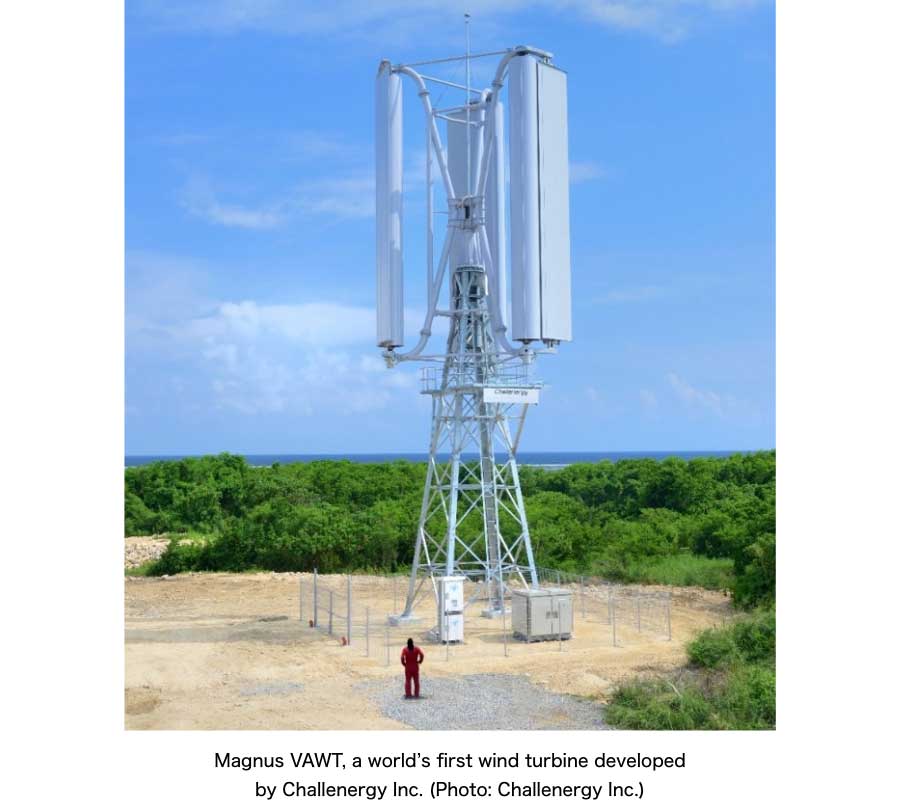
-
The key to success in the steady implementation is to accurately predict the amount of electricity. To be precise, the amount of electricity generated from renewable energy depends on the weather conditions while fossil fuels generate electricity at a constant and stable rate. Therefore, we will offer simulation and consultation service to introduce renewable energy in providing Magnus VAWT. By understanding the available local resources on the remote islands, we would simulate how much solar, and wind powered electricity can be generated, how much electricity from diesel generators could be reduced, and advice on how many of the wind turbines are required to produce enough electricity.
The second solution is to support the post-installation operations of wind and solar energy system. The main idea of the solution is to monitor and control the electric power system (i.e., find out how much energy is being made by solar and wind power, send out alerts if there’s any issue with the generators, etc.) via satellite communication. Since the satellite communication will not be affected by natural disasters, it enables the system to operate steadily.
How the solution changes energy system in remote islands in the Philippines
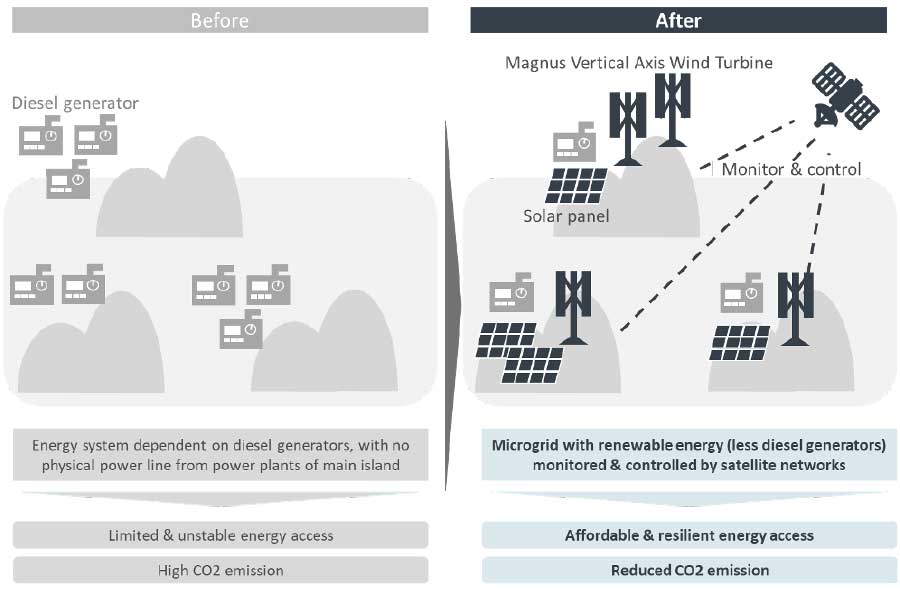
- Q :
- What are the innovative features and uniqueness of these solutions?
- A :
- First and foremost, Magnus VAWT is the world’s first wind turbine, which utilizes "Magnus Effect” and allows electricity to be generated even under typhoon.
Another unique point with this demonstration project is to open up a new market to provide distributed energy system (microgrid) to remote areas with digital technologies. Since the supply of electricity produced by large power plants through power lines is the most common method, there aren't many companies willing to run power cables to provide enough electricity to the residents of remote areas. However, this energy system management through satellite communication could lead to potential opportunities for more companies to supply electricity to remote areas without any physical powerlines.
- Q :
- Why did you choose Philippines National Oil Company (PNOC) Renewables Corporation as a partner for this project?
- A :
- Back when Challenergy was expanding the business to the Philippines in 2018, PNOC Renewables Corporation (Renewable energy section, Petroleum public corporation) was the only entity examining the possibility of serving renewable energy in remote islands with public-interest. PNOC, as a leading player in the expansion of renewable energy in the Philippines, shares a same future vision of improving energy supply for remote islands and supports us in the selection of potential sites of setting the wind turbines, and in the operations management.
- Q :
- After the success of this project, what are the next steps and future prospects?
- A :
- Once the business succeeds in the Philippines, the same approach will be introduced to other ASEAN countries such as Indonesia, Malaysia and Viet Nam, which comprise many islands. In addition, Myanmar is another potential country for which we plan to deploy the system. Although its geographical characteristics differ from the Philippines, there are many remote areas without electricity deep in the mountains. Our services can be applied to a wide range of areas not only by the wind and solar energy, but also by water and biomass energy that can be used with the same system.
Challenergy Inc., signed a Memorandum of Understanding (MOU)
with PNOC Renewables Corporation
